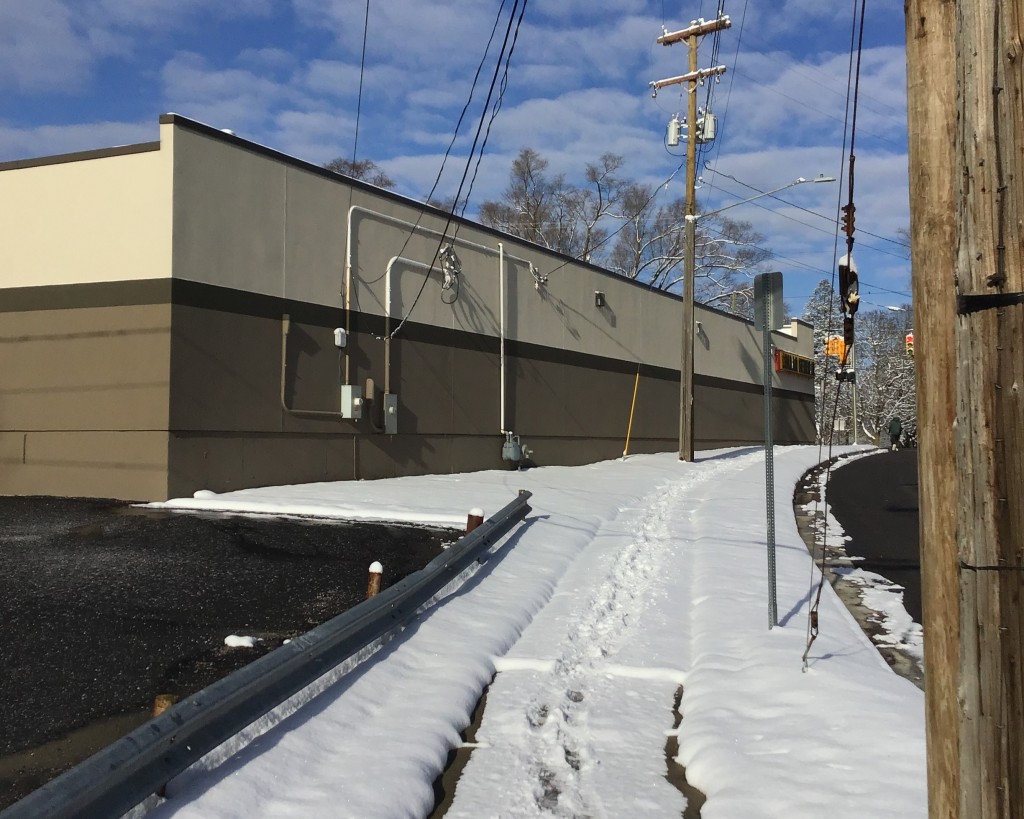
Known for strong geometric arrangements in his “decisive moment” photographs, Henri Cartier-Bresson had a strong interest in geometry long before he held his first camera as a child. Many living photographers capture pictures strong on geometry, too: patterns of line, intersecting planes, masses of color or texture that establish a prominent pattern, and so on. This photo of the side of a convenience store has electrical conduit pipes attached to the wall. In between scattered clouds, the bright light at low morning angle shines like the beam of a spotlight onto the east-facing sides of the vertical conduit segments, making it stand out from the flat expanse of the wall even more than usual. It is worth asking why perpendiculars and angles of all sorts should attract the viewer’s eye, though.
One explanation could be the sometimes dramatic tension between forces of order and disorder; between entropy spiraling out of control and decay versus neg-entropy tending toward structure and growth. By this logic, a composition (music, visual art, or another form of creative expression) with prominent skeleton, foundation, or another dominant organizing structure presents something that the audience can readily fasten onto – attaching meaning, emotion, memory, or aspiration to the event or composition. By comparison, an example lacking in strong geometry may be harder to recognize significance, meaning, purpose, or pattern to relate to. In this abstract way of thinking, strong geometry “makes sense,” but vague or non-apparent patterns in a composition do not “make sense,” at least not right away.
This same dramatic tension between forces of focus versus blur, growth versus decay, clarity versus dissolution can be found outside the realm of optics and composition. It also applies to thinking and to communicating an idea with words, too. After all, a strong pattern, easy-to-follow series of logical statements, and convincing conclusion will be easier for a person to latch onto or follow the line of reasoning. By contrast, unclear structure or obscured pattern and lack of definite shape can detract from the person’s effort to engage in the subject. Whether it is the strong geometry of a visual composition or the bold design in a philosophical statement, patterns with clear structure allow readers or viewers to “make sense” of the matter most readily and to maximum satisfaction.
